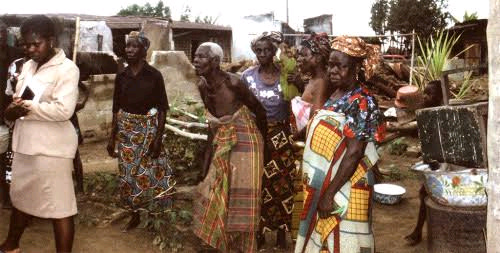The Road to Odi
On 20 November 1999, the fishing town of Odi in Bayelsa State became the site of one of the most devastating military operations against civilians in Nigeria’s post-military era. The massacre followed the killing of twelve policemen by armed youths earlier that month. Instead of a targeted pursuit of the perpetrators, the Nigerian military launched a full-scale operation that left most of the community destroyed and hundreds of civilians dead.
The incident must be understood within the wider unrest in the Niger Delta during the late 1990s. The region was plagued by ecological degradation from decades of oil extraction, lack of development, and rising youth militancy. Inspired partly by the Ogoni struggle led by Ken Saro-Wiwa, Niger Delta youths increasingly confronted state authorities and multinational oil companies.
On 4 November 1999, twelve policemen sent to investigate allegations of oil theft and pipeline vandalism were killed in Odi. The government under President Olusegun Obasanjo, only months into Nigeria’s new democratic era, demanded the suspects be handed over. When the community failed to comply, federal authorities prepared for military intervention.
EXPLORE: Nigerian Civil War
The Military Operation
On 20 November, the Nigerian army launched “Operation Restore Hope”, deploying troops supported by heavy weaponry, naval gunboats, and helicopters. According to eyewitnesses and human rights reports, the operation quickly escalated into indiscriminate violence.
- Houses, schools, churches, and clinics were razed.
- Soldiers opened fire on fleeing civilians, including women and children.
- Entire neighbourhoods were looted and burned.
By the end of the assault, Odi had been reduced to rubble. Estimates of civilian deaths vary widely. While the government admitted only a small number of casualties, human rights organisations and community leaders reported hundreds killed, with some estimates reaching over 1,000.
Survivors’ Testimonies
Eyewitnesses described scenes of chaos and horror.
- Chief Sunday Izon, an elder, recalled helicopters circling overhead while soldiers fired indiscriminately: “People were running everywhere, even women and children. The soldiers shot anyone they saw.”
- Mrs. Comfort Alagoa testified to losing family members as soldiers burned their home: “They destroyed everything, they were not after criminals – they destroyed everyone.”
- Fishermen attempting to flee by canoe reported soldiers firing from gunboats, leaving bodies floating in the rivers.
Human rights groups also documented cases of sexual violence against women during the operation. Churches, where many had sought sanctuary, were not spared. Survivors described mass killings within religious buildings, intensifying the trauma.
Government Justifications
President Obasanjo’s administration justified the assault as a necessary measure to restore law and order after the killing of security personnel. Officials argued that Odi had harboured militants and refused to hand them over despite repeated warnings.
Military commanders claimed they faced armed resistance during the operation. However, reports from journalists and international observers contradicted these statements, emphasising that the scale of destruction far exceeded any reasonable security objective.
Human Rights Watch, Amnesty International, and Nigerian civil society organisations denounced the massacre as disproportionate and indiscriminate use of force. The government’s attempts to downplay civilian casualties only deepened suspicion and public outrage.
EXPLORE NOW: Military Era & Coups in Nigeria
Aftermath and Calls for Justice
The destruction of Odi generated widespread condemnation both nationally and internationally. Civil society groups, student movements, and Niger Delta activists denounced the killings as evidence of the Nigerian state’s disregard for civilian lives in oil-producing communities.
In the following years, survivors and advocacy groups demanded compensation and accountability. However, successive governments failed to prosecute military officials responsible for the assault. This impunity entrenched mistrust between Niger Delta communities and the federal government.
In 2013, after years of legal battles, a Federal High Court in Port Harcourt ordered the Nigerian government to pay N37.6 billion in compensation to Odi residents. Although partial payments were later made, many survivors still consider justice incomplete.
Eyewitness Accounts of Odi Massacre
Long-Term Impact
The Odi massacre became a symbol of state violence in the Niger Delta, fuelling militancy and radicalisation among youths. For many, it proved that peaceful protest was futile, leading to the rise of militant groups like the Movement for the Emancipation of the Niger Delta (MEND) in the 2000s.
The tragedy continues to shape activism in the region, serving as a rallying cry for demands for resource control, environmental justice, and respect for human rights. It also remains a cautionary tale about the dangers of militarising responses to civil unrest.
The Odi massacre is often invoked in policy discussions about security sector reform, human rights protection, and alternative approaches to conflict resolution in Nigeria. It illustrates the need for proportionality, accountability, and adherence to the rule of law in all security operations.
Conclusion
The Odi Massacre stands as one of the darkest episodes in Nigeria’s Fourth Republic. It revealed how fragile democratic institutions could be when confronted with the legacy of military authoritarianism and how quickly the state could resort to overwhelming violence against its citizens.
For survivors and activists, Odi remains an open wound – a reminder that justice delayed is justice denied. Until accountability is achieved, the massacre will continue to haunt Nigeria’s democratic journey and shape the Niger Delta’s struggle for justice and dignity.
Author’s Note
This article examines the Odi Massacre of 1999, analysing its causes, execution, and consequences within the broader framework of Nigeria’s democratic transition. It highlights the scale of destruction, testimonies of survivors, the government’s justifications, and the enduring impact on Niger Delta activism. The study demonstrates how the massacre reshaped state-community relations and why it remains central to discussions of justice, security, and democratic accountability in Nigeria.
References
- Human Rights Watch. The Destruction of Odi and the Niger Delta Crisis (1999).
- Civil Liberties Organisation (CLO). Odi Massacre Report (2000).
- Amnesty International. Nigeria: Military Abuses in the Niger Delta (2002).
